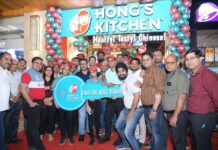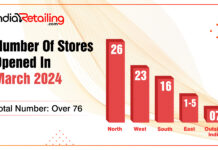The ready-to-eat (RTE) and ready-to-cook (RTC) food industry has picked up the pace of the accelerating demand and now, they have to catch-p to the demand of the customers with special dietary requirements
By Prachi Patil
Globally, the demand for ready-to-eat (RTE) and ready-to-cook (RTC) food products has increased significantly. Lack of time, changing food preferences, and easy access to varied food groups have stirred a massive demand for RTE and RTC products worldwide, including in India.
The State of Existing Scenario
A report published by Technavio on Ready-to-Cook Market in India 2022-2026 revealed that the industry is anticipated to grow by USD 451.51 million between 2021- 2026. The year-on-year growth in this period is predicted to be 8.97%. Expected growth in the market can be attributed to high disposable incomes among working professionals, rising urbanization, tiring lifestyle, and ease of use. Moreover, the rising need for quick food with freshness and high nutritional value further supports the growth of the Indian RTE and RTC food market.
Due to this trend, Indian food manufacturers are trying to leverage the unexplored potential of this segment to foster innovation, enhance the usefulness and utility value, and fulfil higher quality standards. The RTE category that earlier comprised instant noodles, frozen snacks, soups, and frozen vegetables has come a long way from where it started. The industry has paced up with the change in preference and the broad customer base it caters to. The range of RTE products has widened and been customized to suit different taste palates. From burger patties to palak paneer, from idli sambhar to plant-based meat like jackfruit, you name it, and you will get it.
Not only the RTE market, but there is also an equally growing demand for RTC food products as the time spent in chopping vegetables or cleaning fruits is saved. Vegetables, especially, are carefully selected, well[1]cleaned, and pre-chopped to save energy, money, and time, and they can be cooked in no time as per individual preferences. Even more enticing to the customers is that the RTC food is easy to order, cost-effective, and available in healthy variants. This evolution in acceptance in the food industry has established a whole new space for Indian manufacturers. Simply put, this is a win-win situation for food manufacturers and consumers.
The Landscape of the Future
In 2020, the Union Cabinet, headed by the Prime Minister of India, approved establishing the Production-Linked Incentive (PLI) Scheme. The objective of this scheme is to enable the expansion of processing capacity to boost processed food outcomes, improve exports, and increase competitiveness within the industry. Add to this the contribution of the Warehousing Development and Regulatory Authority (WDRA) in regulating and setting up warehouses, which has proven helpful to food producers, manufacturers, and the processing industry.
Rapid urbanization has emerged as one of the main drivers of growth in various sectors, especially in the RTE and RTC food industries, in the past fi ve years. Since the target market and existing customer base is widening, food brands too, are gradually focusing on pre-cooked food varieties. Another potential growth area for the RTE and RTC food industry is the expansion of domestic store chains and collaboration with international retailers that provide RTE and RTC food products.
Even though there exists a wide range of RTC foods, further acceleration will depend on how well and soon brands introduce regional delicacies and global cuisines incorporated with dietary requirements such as plant[1]based food, keto, and paleo, among others. RTC and RTE products offering options that are clean, gluten-free, dairy[1]free, and made up of whole food ingredients to suit the conscious consumers’ values and sensitivities will further potentially elevate the industry. Convenient, healthy, and well-preserved foods with minimal additives will find their fan base.
The Bottom Line
While the government and brands are doing their bit to bring the RTE and RTC segment into the spotlight, the new[1]age customers are constantly looking for better products, services, and experiences through digital mediums and in[1]person. The tech-savvy customers have also become wary of what goes behind making these products and are thus investing more time researching the ingredients, reviews, and other components.
This is a clear indicator that brands operating in this sector will need to focus on R&D and maintain their digital footprint to target and retain the right set of customers for their future development. Ultimately, we all know that customers are open to paying a reasonable price for products that offer uncompromised convenience and quality!

The writer is Founder, Suzu Agro Pvt. Ltd, whose brand Aaj Pakao offers a range of ready to eat & ready to cook food.







